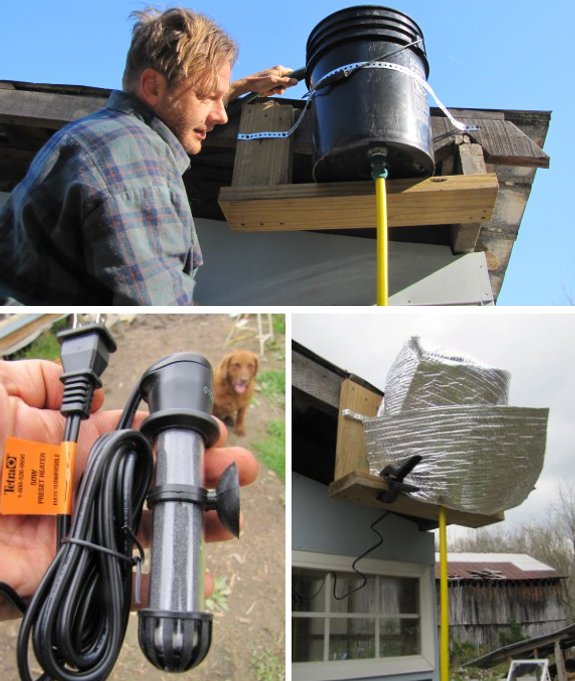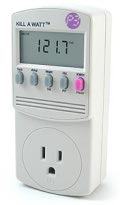
5 gallon bucket solar shower update

It would seem that our spurt
of springtime sunshine wasn't quite enough energy to heat up my 5
gallon bucket solar shower
to any noticeable warmth.
The next stage of the
experiment involves a small 2-15 gallon submersible aquarium heater
which can be found for around 15 dollars at local retail outlets. It
automatically warms your water to a 76 to 80 degree range, but you need
to give it a full 24 hours to reach that temperature.
 Installing
the heater was easy thanks to the attached suction cup and it didn't
take much effort at all to wrap some reflectix around the sides and the
top to hold the heat in.
Installing
the heater was easy thanks to the attached suction cup and it didn't
take much effort at all to wrap some reflectix around the sides and the
top to hold the heat in.
I plugged in a Kill-a-Watt
device to measure how much power it will need. Anna thinks it might be
comparable to heating up a pot of water on the electric stove, which is
just the sort of debate we got the Kill-a-Watt gizmo for. The heater is only
rated at 50 watts, which might be less power at 24 hours compared to 5
minutes of a 220 volt stove top coil.
Want more in-depth information? Browse through our books.
Or explore more posts by date or by subject.
About us: Anna Hess and Mark Hamilton spent over a decade living self-sufficiently in the mountains of Virginia before moving north to start over from scratch in the foothills of Ohio. They've experimented with permaculture, no-till gardening, trailersteading, home-based microbusinesses and much more, writing about their adventures in both blogs and books.
Want to be notified when new comments are posted on this page? Click on the RSS button after you add a comment to subscribe to the comment feed, or simply check the box beside "email replies to me" while writing your comment.

But probably a nice breeding temperature for legionella and possibly other bacteria.
A hot water system in a house should heat the water to at least 60°C (140°F) and preferably 70°C (158°F) to kill bacteria. The hot water should then be mixed with cold water in the shower or tap to get the desired temperature.
Copper water lines also hinder the development of bacteria.
Via the teensy development board website I found this private website with a very interesting PV and solar hot water setup.